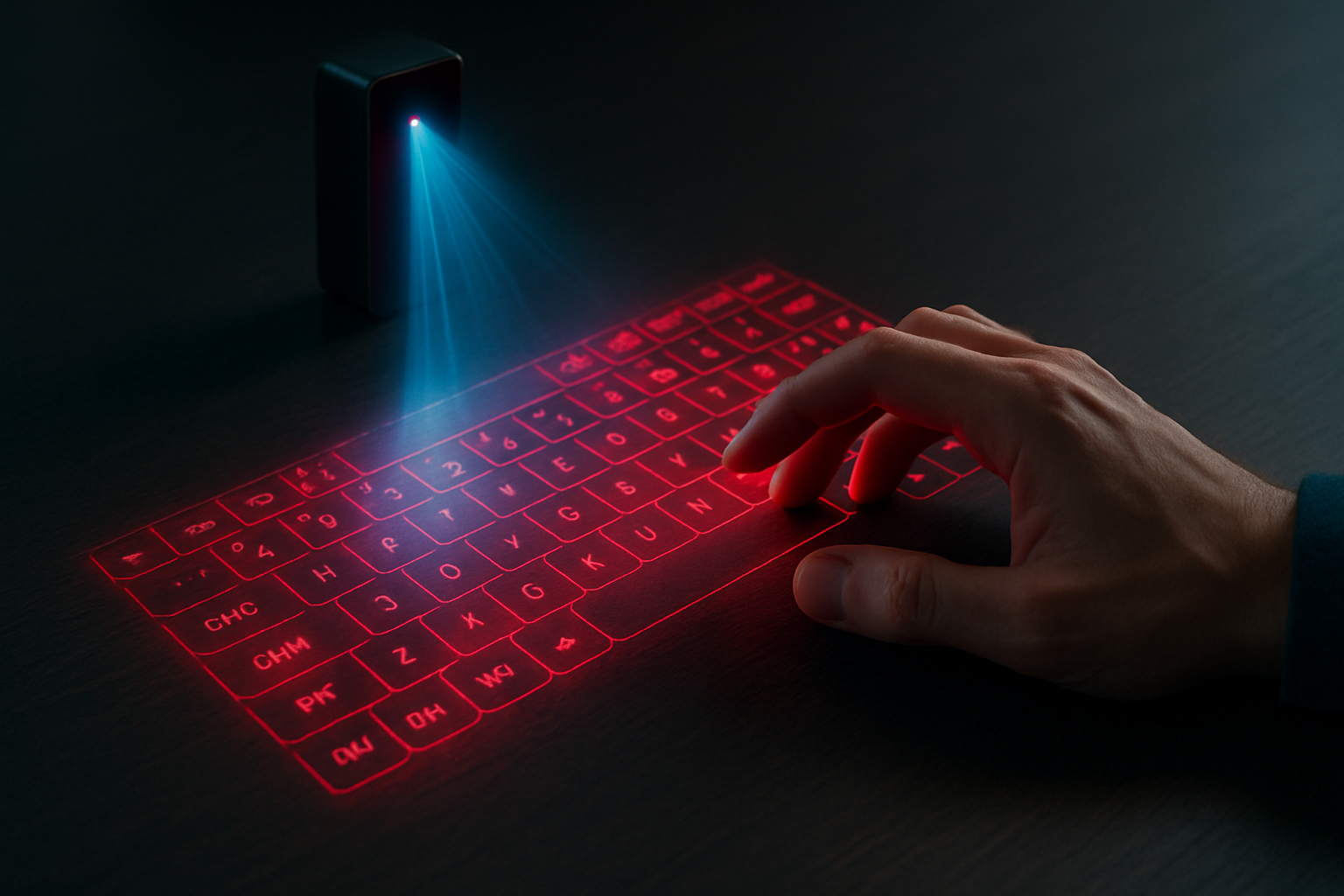Holographic Keyboards: The Future of Typing?
In an era where technology continues to push boundaries, holographic keyboards emerge as a fascinating frontier in human-computer interaction. This cutting-edge innovation promises to revolutionize the way we input data, offering a blend of futuristic aesthetics and practical functionality. As we delve into the world of holographic keyboards, we'll explore their potential to reshape our daily digital interactions and the challenges they face in becoming a mainstream input device.

How Holographic Keyboards Work
At their core, holographic keyboards use a combination of laser technology and sensors to create a virtual input device. A small projector emits a laser-generated image of a keyboard onto a flat surface, while infrared sensors detect the user’s finger movements. When a user “presses” a key, the system interprets the interruption of the infrared beam as a keystroke, translating it into digital input.
The Advantages of Going Holographic
Holographic keyboards offer several compelling advantages over traditional input methods. Their compact nature makes them ideal for mobile use, as they can be projected onto any flat surface without the need for physical hardware. This portability is particularly appealing for travelers and professionals who work in various locations. Additionally, the lack of physical keys means these keyboards are inherently waterproof and immune to dust or debris, potentially increasing their longevity and reliability in challenging environments.
Challenges and Limitations
Despite their futuristic appeal, holographic keyboards face significant hurdles in widespread adoption. The lack of tactile feedback, a crucial aspect of typing for many users, remains a major challenge. Without the physical sensation of key presses, users may find it difficult to type accurately or maintain high speeds. Moreover, the technology’s reliance on flat surfaces and specific lighting conditions limits its versatility in real-world scenarios.
Current Market Status and Future Prospects
While holographic keyboards have yet to achieve mainstream success, several companies are actively developing and refining the technology. Startups and established tech firms alike are investing in research to overcome the current limitations, with some prototypes showing promising results in terms of accuracy and user experience. The estimated price range for consumer-grade holographic keyboards varies widely, from $100 to $500, depending on the sophistication of the technology and additional features.
Potential Applications Beyond Typing
The potential of holographic projection technology extends far beyond keyboards. Researchers are exploring applications in areas such as augmented reality interfaces, virtual touchscreens for public spaces, and even holographic displays for smartphones and tablets. These developments could pave the way for more immersive and interactive digital experiences across various industries, from education to entertainment.
The Road to Mainstream Adoption
For holographic keyboards to transition from novelty to necessity, several key improvements are needed. Enhancing the accuracy of gesture recognition, developing more robust feedback mechanisms, and improving performance under various lighting conditions are crucial steps. Additionally, integrating this technology seamlessly with existing devices and operating systems will be essential for widespread acceptance.
Conclusion: A Glimpse into the Future of Input Devices
Holographic keyboards represent an intriguing glimpse into the future of human-computer interaction. While they face significant challenges in replacing traditional keyboards, their potential to offer flexible, hygienic, and futuristic input solutions is undeniable. As technology continues to evolve, we may find ourselves typing on thin air sooner than we think, ushering in a new era of digital interaction that blurs the line between the physical and virtual worlds.





